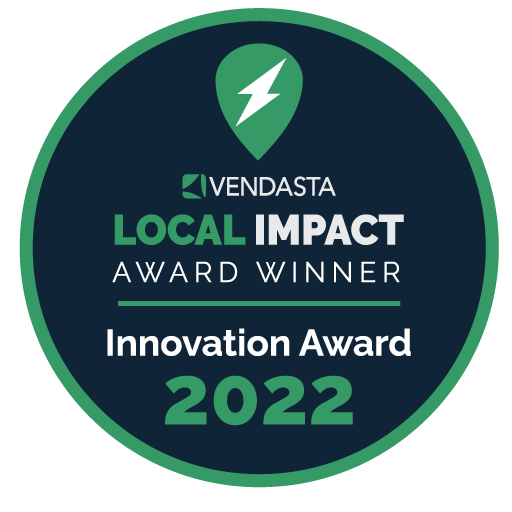What is the Google helpful content update?
In this short white paper, I will provide you with everything you need to know about the Google helpful content update, how to recover from it and how to avoid it altogether. A lot of this is just common sense but there are some very useful insights and tips included as well in this short newsletter. Enjoy the resource!
Google has recently announced a new algorithm update that is designed to promote helpful, informative content on the web. This update, called the “helpful content update,” will affect how Google ranks websites in its search results. If you want to understand more about the helpful content update, how it affects the website, entity authority, and the impact it has had on search rankings, read on! Google’s new helpful content update specifically targets “content that seems to have been primarily created for ranking well in search engines. The update is designed to promote “high-quality and informative content” in search results.
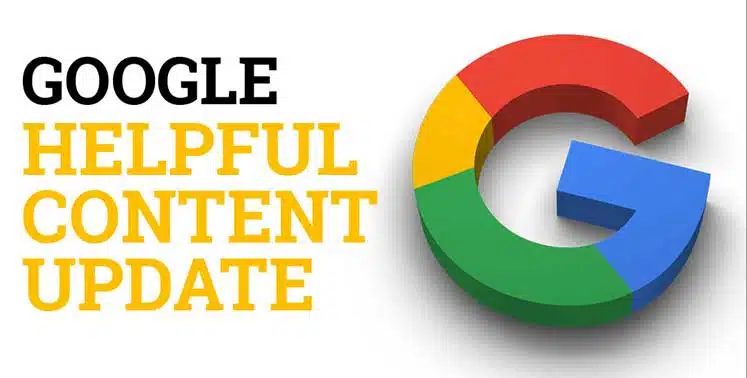
Here are a 5 few quick tips for creating great content that is helpful for your clients:
- Understand your audience: Before you start creating content, it’s important to understand who your audience is and what their needs and interests are. This will help you create content that is relevant and valuable to them.
- Focus on providing value: The best content is that which provides value to your audience. This could be information that helps them solve a problem, learn something new, or simply entertain them.
- Use simple language: Avoid using jargon or overly technical language in your content. Instead, use simple, easy-to-understand language that anyone can read and understand.
- Be concise: Keep your content concise and to the point. Avoid rambling or going off on tangents, and focus on delivering your message in the most effective way possible.
- Proofread and edit: Always proofread and edit your content before publishing it. This will help ensure that it is error-free and easy to read.
By following these tips, you can create great content that is helpful for your clients and effectively communicates your message.
Here’s what Google had to say directly regarding the update, “Google Search is always working to better connect people to helpful information. To this end, we’re launching what we’re calling the “helpful content update” that’s part of a broader effort to ensure people see more original, helpful content written by people, for people, in search results.”

A Few Quick Facts and Stats
- The update will use a new “helpfulness” metric to rank content.
- The update will be rolled out gradually, with Google saying it could take “several months” for the full effects to be felt.
- The update is the latest in a series of algorithm changes designed to improve the quality of search results.
- Google has said that the new update is not about punishing low-quality content, but rather about promoting helpful content.
- Since the update, there has been a 20% increase in the number of people who say they find Google helpful
- There has been a 15% increase in the number of people who say they use Google as their primary search engine
- There has been a 10% increase in the number of people who say they use Google more than any other search engine
First, let’s turn to what Google said directly in its website statement regarding the update. Below is the full excerpt from Google’s website on the update:
What Google Said Directly on Its Website About the Helpful Content Algorithm Update
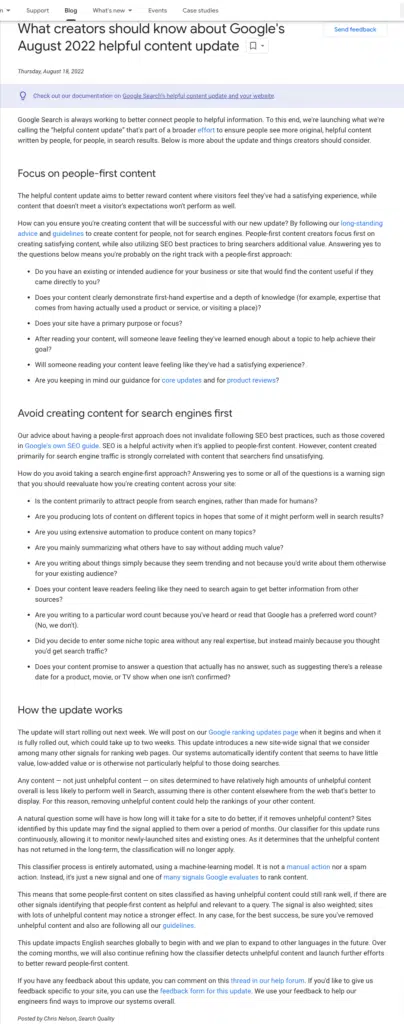
Creating Content that Demonstrates E-A-T

I have heard chatter on different channels about which industries or categories were hardest hit. Here is one news article discussing how some big publishers were hit with this update: https://pressgazette.co.uk/publishers/digital-journalism/googles-latest-core-algorithm-change-hits-major-news-publishers-harder-than-helpful-content-update/
Here are some high-level takeaways:
- Googlebot crawls web pages and evaluates SIGNALS in content. They admit that directly in their release.
- This is a site-wide SIGNAL if/when the algorithm determines there is a relatively high amount of unhelpful content on the companies site
- There is no alert or notification if/when the site-wide signal is applied (penalty)
- The update is targeting SEO content and especially duplicate or AI-generated content
- Instead of worrying about what do next, start re-evaluating existing content and look at how you can make it better.
- Agencies need to start consulting their clients differently. Content is still king. Distribution is queen.
- Have a content strategy and a budget for it; or get one. It’s just not something you can get by without any more.
Here are 5 tips for demonstrating expertise in the content you write:
- Research your topic thoroughly: Make sure you have a thorough understanding of the topic you’re writing about. This will help you provide accurate and valuable information to your readers.
- Use credible sources: In order to demonstrate expertise, it’s important to use credible sources to support your ideas and claims. This could include academic research, industry studies, or expert opinions.
- Be specific and detailed: Avoid generalizations and vague statements in your writing. Instead, provide specific and detailed information that will help your readers understand your topic more deeply.
- Use technical terms and jargon appropriately: If you are writing on a technical topic, it’s important to use technical terms and jargon appropriately. However, make sure to explain these terms clearly so that your readers can understand them.
- Provide examples and case studies: Examples and case studies are a great way to illustrate your points and demonstrate your expertise on a topic. They can help make your writing more engaging and help your readers better understand your ideas.
By following these tips, you can demonstrate your expertise in the content you write and provide valuable and credible information to your readers.
Here are a few tips for building trust online:
- Be transparent: Be open and transparent about who you are and what you do. This will help build trust with your audience and show that you are honest and trustworthy.
- Provide value: Provide valuable and useful information to your audience. This could be in the form of blog posts, articles, videos, or other content that helps them learn something new or solve a problem.
- Be consistent: Consistency is key when it comes to building trust online. Make sure to consistently provide value and be transparent in all of your online interactions.
- Engage with your audience: Engage with your audience by responding to comments and messages, and by asking for their feedback and input. This will help build a relationship and show that you value their opinions.
- Protect your audience’s privacy: Protecting your audience’s privacy is essential for building trust online. Make sure to have clear privacy policies in place, and only collect and use personal information with your audience’s consent.
By following these tips, you can build trust online and create a positive reputation for your brand.
FAQs
When did Google’s helpful content update start?
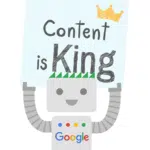
That’s the official end of what Google announced on its website article to customers and the new user experience from this update on Thursday, August 18, 2022. The helpful content algorithm update then launched on August 25th, 2022, targeting websites with a large amount of unsatisfying or unhelpful content. My intuition would tell me that this update will continue to roll out in future updates as Google applies the algorithm to more categories of sites as it perfects the results it is looking for.
When was Google’s helpful content update finished rolling out?

Overall, the update, (I call it phase one of the updates) took 15 days to roll out, officially finishing on September 9th, 2022, with some websites seeing changes in their rankings and others seeing no change at all. Analysis of the first phase of this update shows the update really impacts only a few categories in a major way.
How do I recover from the helpful content update?

First, prioritize your readers but the answer is simple: by ensuring that your content is high quality, original, and informative for those readers or clients. This means that you need to put in the extra effort and strategy to make sure that your content stands out from the rest. Add value to your content. Look to inform and educate your target audience. Build structure and signals into your content. Focus on providing a reader with a great user experience (UX). Even Google discussed that in their release. Don’t forget that Googlebot is also a reader/user of your content! Here are some tips on how to do all of this effectively!
So let’s try to make some sense of this and hopefully the resources above are also “helpful” in understanding the overall topic at hand.
IN SHORT, HERE ARE THE TOP 7 BULLET POINTS TO CREATING KILLER CONTENT (this is how you recover and/or how you prevent the negative signal):
Research! Get it right. Follow my tips below with the context of what has been provided in the above details!
Include semantically related keywords everywhere. Even better, us on-page.ai for your research and content writing.
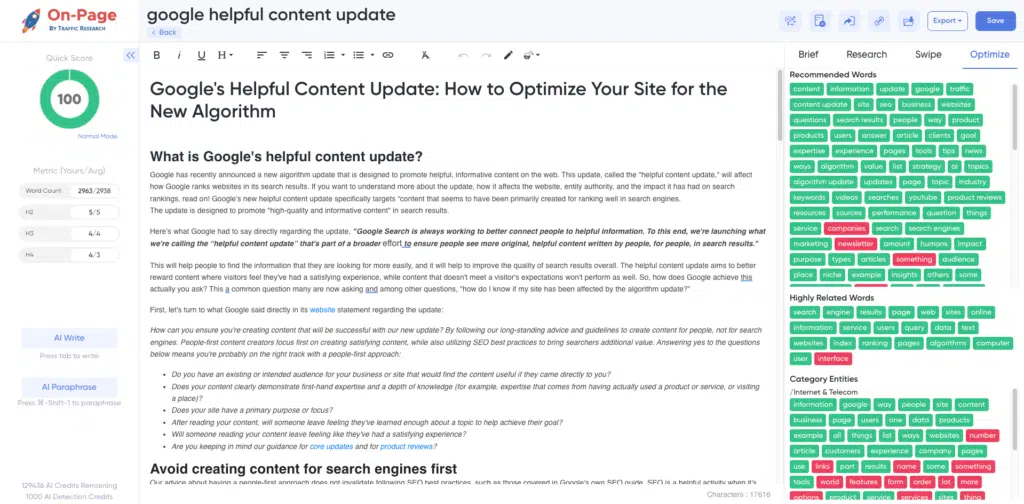
Create sections in your content to break it up and provide structure.
Cite as many relevant, authority sources as you can and link to them with a no follow link.
Create as many different signals as you can in your content. Many tips below.
Use structured data (aka schema).
Create content with the Google E-A-T guidelines in mind.
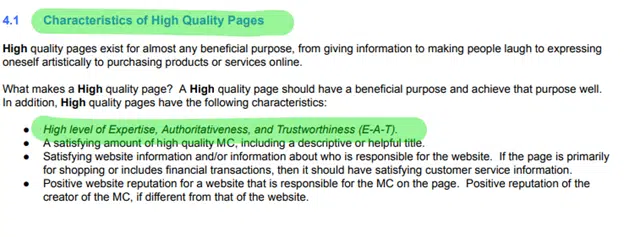
13 Tips to Create Killer Helpful Content for a 5-Star User Experience
- Research! This is how you get the knowledge to demonstrate experience and expertise. The first letter in the EAT acronym. See the tools list that I use for my research. 90% of your result of anything in SEO comes from the first 10% of the process. In the SEO and content marketing industry, the first 10% is your research. Don’t shortcut this step. Personally, I use Keywords Everywhere and their Chrome extension for a big part of the keyword research along with SEMRush, On-page.ai, and the SEO Minion Chrome extension. Your content performance will largely depend on the insights you get from your computer market research.
- Build a content brief, these are the components of your article:
- 1 target keyword theme or topic at most per article (GMB business categories are keywords/themes). Don’t try to create an article of content that addresses more than one theme. Relevancy, relevancy, relevancy.
- What’s the monthly traffic potential of the keywords in the cluster?
- What are the related keywords in the cluster?
- What’s the topic category?
- What words are associated with main category?
- What will your title and H1 be?
- What are your H2, H3 and H4s going to be? This is your outline.
- What are the KPIs of the pages ranking on page 1 for the target keyword?
- What are related categories and topics?
- Often, people will ask, “How do I write a content brief?” —
- A content brief is a document that outlines the details and objectives of a content project. It typically includes information such as the target audience, the goal of the content, the tone and style, and any specific requirements or constraints. To create a content brief, follow these steps:
- Identify the target audience: The first step in creating a content brief is to identify the target audience for the content. This could be a specific group of people, such as customers or employees, or a broader audience, such as the general public.
- Define the goal of the content: Next, define the goal of the content. This could be to inform, educate, entertain, or persuade the audience.
- Outline the tone and style: Determine the tone and style of the content. This could be formal or informal, serious or humorous, and so on.
- Specify any requirements or constraints: Include any specific requirements or constraints for the content, such as word count, formatting, or deadlines.
- Review and finalize the content brief: Once you have all of the information, review the content brief to make sure it is clear and complete. Then, finalize it and distribute it to the relevant parties involved in the content project.
- By creating a content brief, you can ensure that all parties involved in the content project are on the same page and that the final product meets the goals and objectives of the project.
- Include semantically related keywords and category keywords in your content.
- Semantically related keywords are just that, keywords related to the topic or the target keywords. There are great tools like On-Page.ai that evaluate all page one content for a targeted keyword and then provide you a list of the common keywords that occur on all pages that are ranking. This is part of my/our research in step one and I use SEMR or on-page.ai for this but there are other tools as well.
- Semantically related keywords are just that, keywords related to the topic or the target keywords. There are great tools like On-Page.ai that evaluate all page one content for a targeted keyword and then provide you a list of the common keywords that occur on all pages that are ranking. This is part of my/our research in step one and I use SEMR or on-page.ai for this but there are other tools as well.
- ** Use H2-H3-H4 section headings to break up and build sections into your content (this is the key to your structure and flows from the content brief).
- Google loves section headings and relevant content/answers to the section heading below BECAUSE that’s what helps the user, the reader to absorb your content and it section headings help the human brain consume and break up the article into smaller pieces.
- Even better, use the People Also Ask (PAA) or the People Also Search For questions from the target keyword in search as your EXACT section headings! Keywords Everywhere have a great feature for this as well which is another reason I love their tool. On-page.ai generates new PAA opportunities for you too! Another great tool is Answer the Public you should check out for more intelligence on what people are asking online.****
- Answer the question in the paragraph content below the section headings. It’s a simple, logical step but bears being emphasized. Google will crawl your article, find the section heading and then look for relevancy in the content below the H-tag. Feed Google what it wants and answer the question!
- **** Make your first link an anchor text optimized, do-follow link to your target page or digital asset like a GBP listing or web page you want to rank, always. The first link in your content is the most important, we use the first link in a couple of different ways to send links to: GMB CID and PID link, service pages, location pages, and the Knowledge Graph ID link (my personal favorite). Get this link as close to the beginning of the first paragraph as possible and you can use the PlePer chrome extension to generate this link on a page-load of the GBP.**** Make your last link in the article a do follow to the most relevant inner page on the target website OR to another digital asset you want to rank and associate with this topic of the content for this entity. Consider making this a branded anchor text.
- Quote or cite sources of information and provide links to them.
- All links in between the first and last links in your article should be no follows and you should have several! Give the reader (and googlebot) other authority links to topically relevant content/pages. Link to them with optimized anchor text and make sure they are marked as no follow. Why? There is no reason to send do follow authority/pagerank to another authority in the space. The more the merrier in this point really without making it excessive. Google loves rich content that gives the reader lots of connecting points to demonstrate that the content is on point and trustworthy. Use no-follow links to make “relevant connections” between your content and authority pages for the same topic and target keywords. Make sure to set these links to no follow and to open up in a new tab so you don’t bounce the reader off the target page.
- All links in between the first and last links in your article should be no follows and you should have several! Give the reader (and googlebot) other authority links to topically relevant content/pages. Link to them with optimized anchor text and make sure they are marked as no follow. Why? There is no reason to send do follow authority/pagerank to another authority in the space. The more the merrier in this point really without making it excessive. Google loves rich content that gives the reader lots of connecting points to demonstrate that the content is on point and trustworthy. Use no-follow links to make “relevant connections” between your content and authority pages for the same topic and target keywords. Make sure to set these links to no follow and to open up in a new tab so you don’t bounce the reader off the target page.
- **** Include images in your article from a related/relevant GMB post (has to be a GMB post image) if you are doing local/map pack SEO to generate GMB image signals inside the content and to create another connection between the content and the target GMB listing. Google loves images so don’t be shy! Use them but use them strategically by pulling in images from source URLs from your GMB listing and/or your target website.
- **** Include YouTube videos about the company or its services/products if you can. We all know both readers/users and Google love video so feed relevant content in the form of videos from a related YouTube channel for the target entity. Use YouTube as another Google asset in your Google Entity Stack for the video components of your content. Let’s be honest, that will be better than using the same video from a Vimeo account, for example.
- **** Add city names and zip codes into your content for local relevance and proximity signals. Zip codes as hashtags can work too. Whatever you do, try to train Googlebot by sending localized signals in the form of zip codes, cities, neighborhoods and local points of interest into your content and even link to them with no follows when it can apply like in the case of points of interest.
- Use hashtags. Better yet, use the target keyword as a hashtag, then link to a Google search for that hashtag. Like #helpfulcontentupdate
- When writing and structuring your content, think in terms of SIGNALS. How many different ways can you give Googlebot a data signal in your content?
- Content syndication is a really effective method to generate more signals around any given piece of content. This is one of the core strategies we execute on with Signal Genesys using the power and authority of news and media sites. The syndication of content to more distribution end-points helps the number of signals generated to increase and broaden. Always look for ways and more channels to syndicate your content.
- Link signals (do follows and no follows are signals but only do follow links pass real pagerank/authority.) Links are connections. Links train Googlebot so use the different types to provide cites, resources, and depth to your content.
- GMB signals (links to the GMB using the CID, PID, KGID, and share links, vary it; GMB post image signals, links to GMB posts or GMB business.site; links to Google reviews with an image from a GMB post which is an image of a review)
- On-Page signals (H-tags, structured sections with PAA, images, videos, audio/podcasts, reviews with links to the reviews, target keyword density, LSI/semantically related keyword usage)
- Local signals (usage of city names, zip codes, neighborhoods in content; links to local authorities and POIs like museums, parks, government sites, etc.)
- Structured data/schema signals! Do NOT overlook the power of schema. These are powerful signals when leveraged properly.
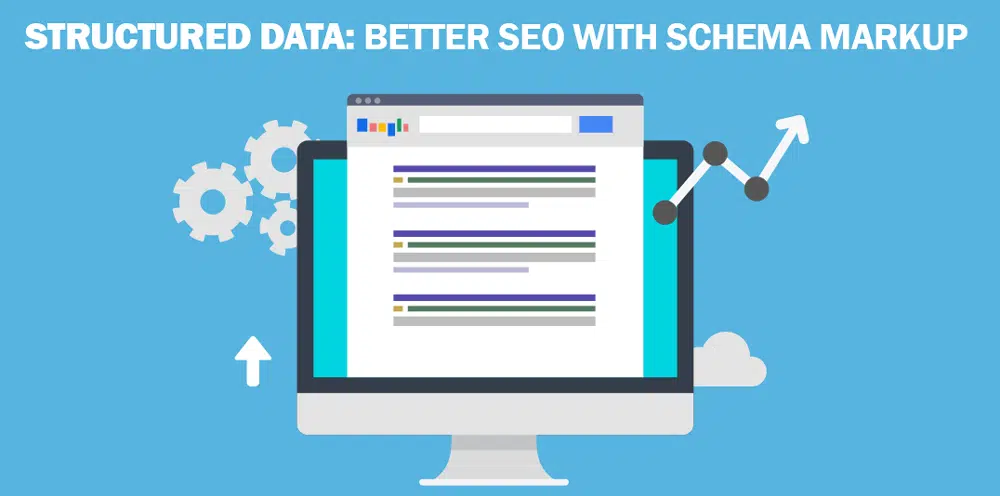
Ok if you can follow these 13 or so major tips and the major principle of writing content for a niche or target audience/reader, you’re going to be creating some absolutely killer content! I assure you, if you follow these tips, the algorithms will interface with and love your content and articles… and the search index will reflect that love.
What is the proper way to cite a source in my articles?
The proper way to cite a source in your article will depend on the citation style you are using. There are many different citation styles, each with its own specific rules and guidelines. Some common citation styles include MLA, APA, and Chicago.
Here is an example of how to cite a source using the MLA style:
In-text citation:
According to Jones, “students often had difficulty using APA style, especially when it was their first time” (199).
Works cited:
Jones, Robert. “Using APA Style in Academic Writing.” The APA Style Blog, American Psychological Association, 19 Mar. 2019, https://apastyle.apa.org/blog/using-apa-style-in-academic-writing.
In general, the basic components of a citation in most styles include the author’s name, the title of the source, the publication date, and the source’s URL or other identifying information. Consult the specific guidelines for the citation style you are using for more detailed information.
Now, what should you do with this helpful content after you have created it?
What To Do with Helpful Content You Have Created
- Make sure it’s assigned to an authorship profile.
- Share it.
- Distribute it.
- Syndicate it.
I like to share it via email, on social media and in direct messaging channels.
I like to distribute my content as a press release using Signal Genesys.
I use the WordPress blog RSS feed as a trigger and then hook that into IFTTT to automate syndication to all my major blog channels like Google Sites, Blogger.com, WordPress.com, Tumblr.com and so on.
About the Author
Lane Houk is the founder and CEO of Signal Genesys, Quantum Agency, and The Marketing Center of Excellence. He is a frequent industry speaker, podcast guest and recently received the 2022 Innovation Award for Local Impact from Vendasta.

Lane is a US Army veteran trained as a combat medic and practical nurse. Today, he is a recognized expert in the digital marketing agency industry. Lane has specific authority and expertise for multi-location enterprises in the Google Ecosystem and is a Level 7 Local Guide. He is a frequent speaker at agency events on topics like Search Engine Optimization, Local/Maps Optimization for Businesses, the agency technology stack and how to scale a digital marketing agency.
As the Managing Partner of Quantum Agency, a white-label marketing agency, he leads a cross-functional marketing team that delivers quality white-label marketing solutions for other digital agencies. Lane is also the co-founder of a proprietary web presence platform called Signal Genesys, a white-label marketing platform for agencies.
The Marketing Center of Excellence hosts a monthly Virtual Masterclass on important industry topics. To subscribe / register for these classes use this link: https://us02web.zoom.us/webinar/register/5516672454401/WN_8HswBQnxQ7msNxP3KtP2kA


